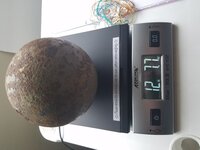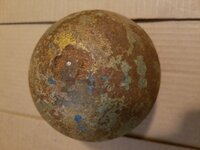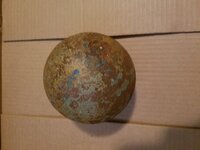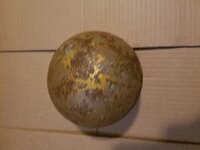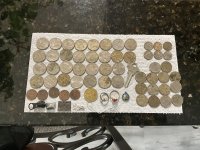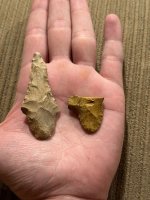A friend from Norfolk, VA gave this to me. He said he found it locally, buried on his property. I was wondering if this was Civil War or earlier? It is made of iron. Weighs 12.77 lbs. Diameter is about 4 1/4 - 4 3/4 inches. It has some traces of what seems to be paint. Gold and green flakes, possibly from two separate paint coats. Let me know if there is any other information I can try to provide. Is it possible for anyone to date this find?
Attachments
Upvote
0


